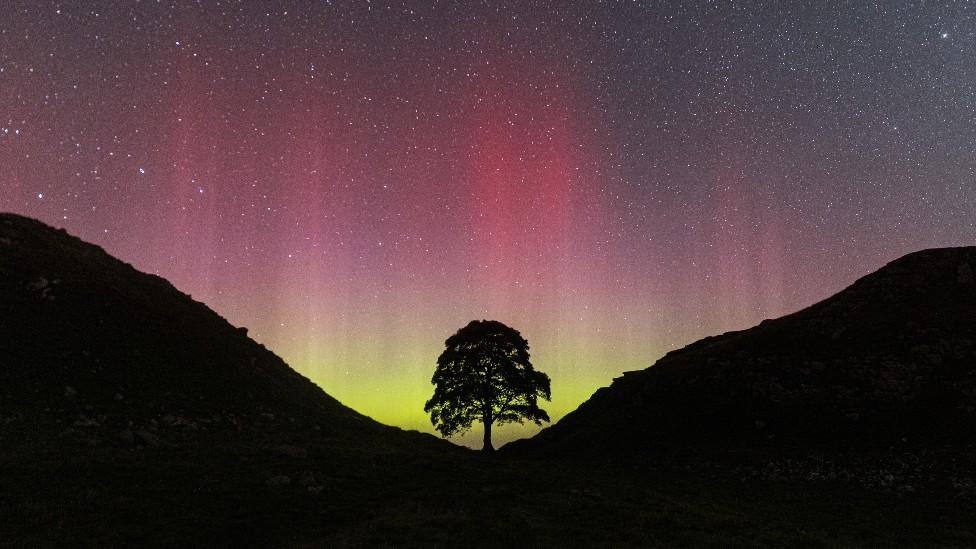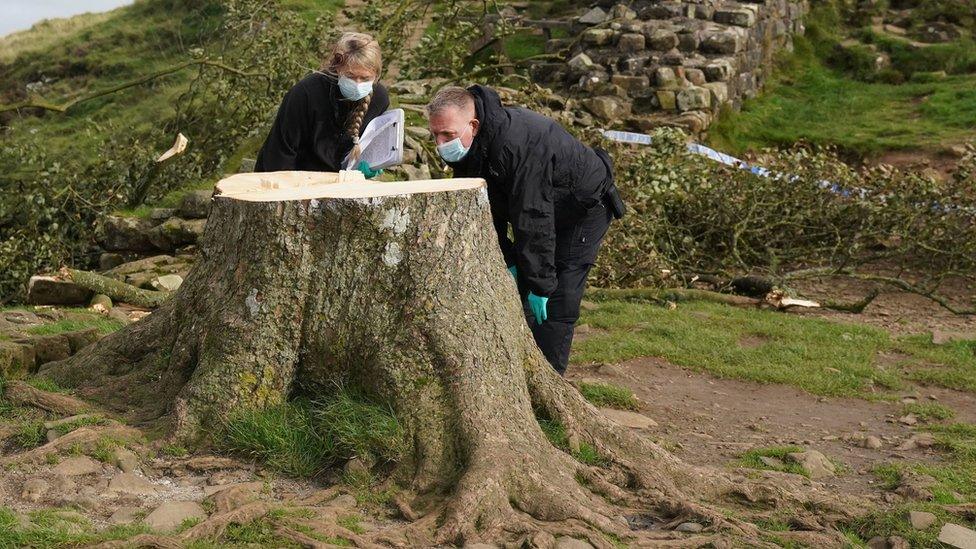Sycamore Gap: The dismantling and removal of a national landmark
- Published
Watch: Emotional scenes as tree chopped up and removed
Two weeks after shocked walkers found the famous sycamore tree of Hadrian's Wall felled, the timber has been taken away in a complicated operation. The BBC spoke to some of those who watched the removal of the national landmark.
It was the day Sycamore Gap became just another gap.
The usual sounds of circling crows and blustering winds were replaced by the snarl of chainsaws and thunder of diesel engines.
The 50-foot high sycamore had stood in its spot, perfectly framed by two hills along Hadrian's Wall, since the 1860s.
Now only its stump remains, roots deeply embedded in the stone and soil of the 1,900-year-old boundary of the Roman empire.
The public was asked to stay away for safety reasons but, for some, the draw to come and watch was too strong.
Martine Purves from Biggar in Scotland said she was driving by and just had to pause her journey.
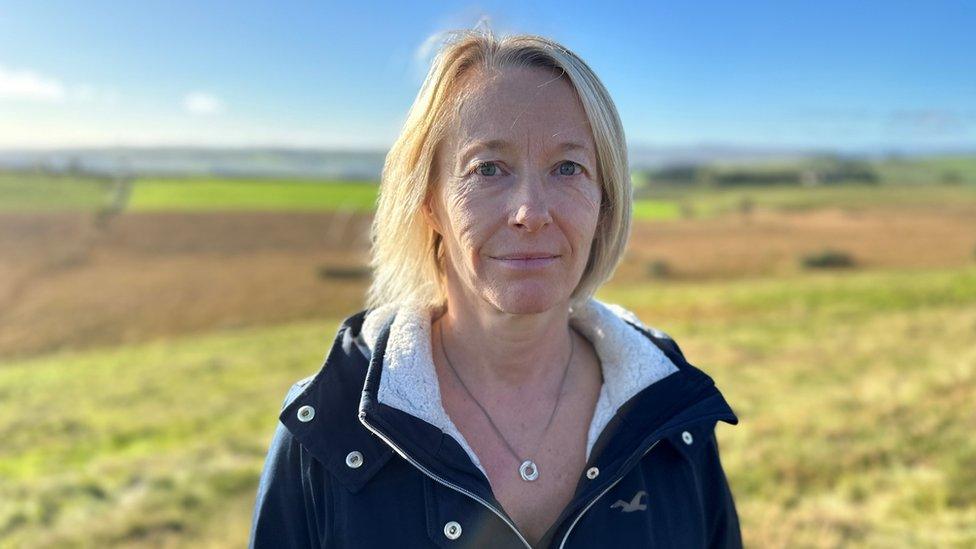
Martine Purves stopped to see the work
She had planned to visit the famous tree a couple of weeks ago but had been deterred by the weather.
"I'm sorry not to have seen it," she said as workmen in high-visibility clothing moved around the site.
"I was just so sad when I heard about the tree. Then I felt this absolute fury.
"It's part of the national consciousness and I hope they can salvage something from it."
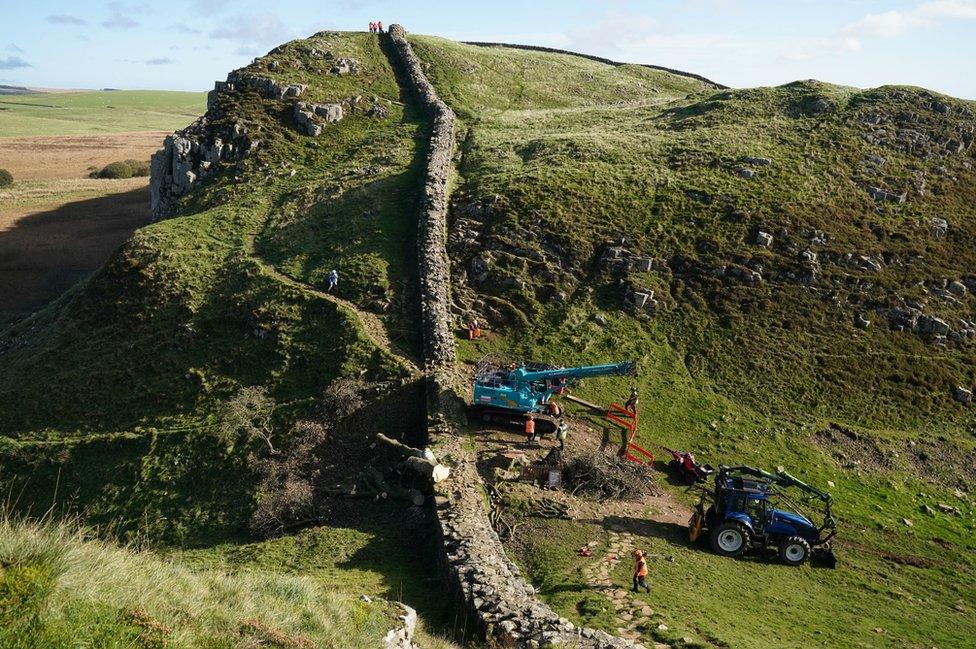
A crane came from Manchester to remove the remains of the tree
She joined a throng of journalists, some of whom had been at the site since dawn, to watch the complicated procedure.
There was a glorious sunrise but, despite this, the mood was funereal.
The crane crawled its way along the the half-mile-long muddy track from the road, like a cortege.
It had been brought from Manchester to the Unesco world heritage site, in order to lift the trunk and branches once they had been cut into smaller, more transportable parts.
The timber was kept in pieces that were as large as possible - to preserve future options - then taken away and stored at an unspecified National Trust site.
For Frank and Pauline Everest from Stevenage, no words could do it justice.
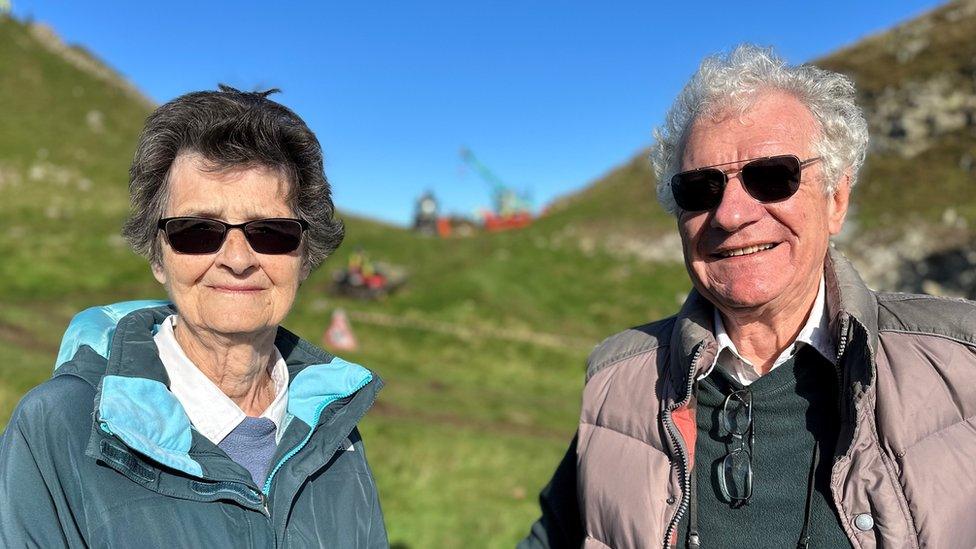
Frank and Pauline Everest said they were sad to see the gap without the sycamore
They were on a foodie holiday in Northumberland and had heard about the tree being removed while eating in a local pub.
"It's just so bizarre," Frank says of the tree's felling. "It's wanton vandalism."
Pauline nods in agreement, adding: "I just can't understand it."
They had never seen the tree standing and are sad that now they never will.
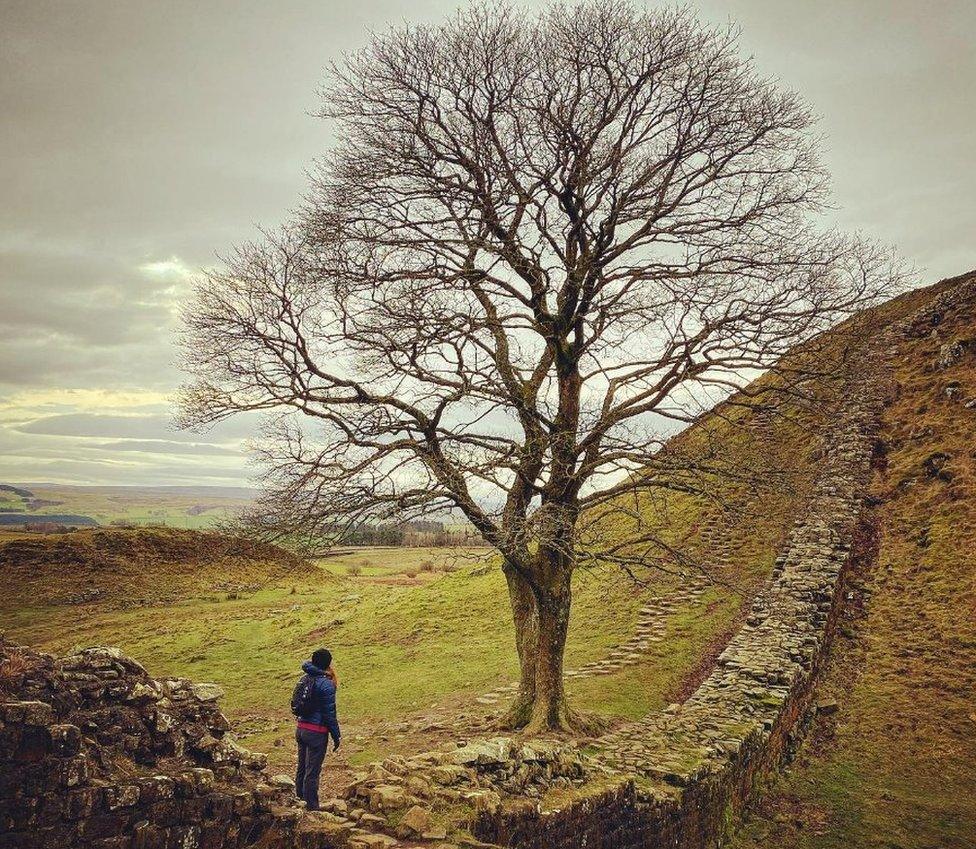
The sycamore had stood in the gap since the 1860s
It was an upset shared by Maggie McCole, who was visiting from Coldingham with her partner Kevin McClure and their three large dogs.
Sonny, their 12-year-old northern Inuit, sat with his eyes half-closed in the sun while Maggie watched the work on what she called a "momentous" day.
"We picked up a hitchhiker in the Highlands who told us we should visit," she said.
"If only we had a come a few weeks earlier."

Maggie and Sonny came to see the work
She said it was a tragedy but hopes that something positive can come from it.
"The shock about what happened has really unified the nation, so I think it would be nice if parts of the tree could be sent to the four countries of Great Britain," she said.
Matt Beresford has fond memories of seeing the tree when he completed the Hadrian's Wall walk - an 84-mile trek between Newcastle and Carlisle - in 2020.
"I wish now I had taken it in more," he said. He was back at the site with his wife, Angharad, and their eight-month-old son, Leif, as part of their permanent campervan tour.
"I guess I just always thought it would be there: I couldn't imagine it gone," he said. "If it had been lost in a storm that would have been one thing. But the fact it was done deliberately just doesn't make any sense."
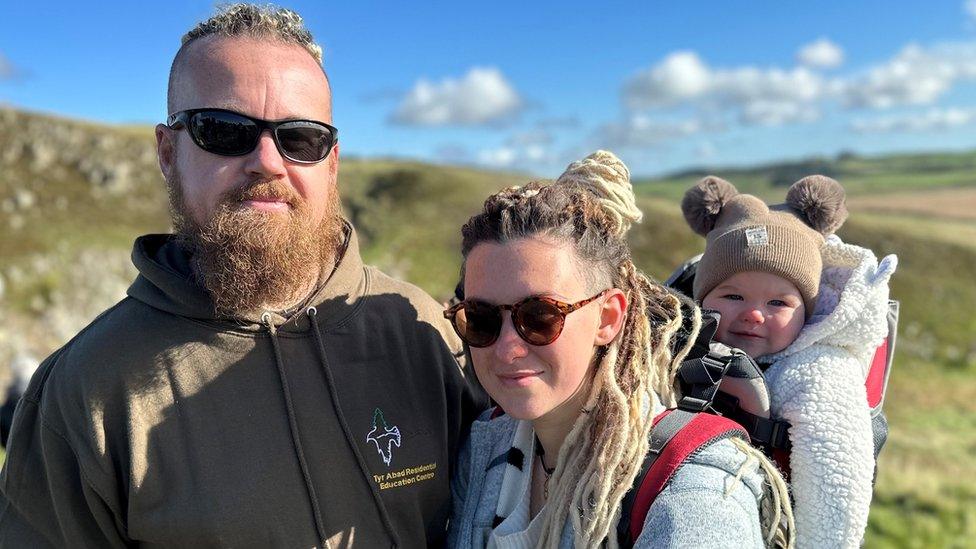
Matt, Angharad and Leif Beresford also watched the work
"It's so well known. It's just a magical place," Matt said. "The public response to what happened here has been amazing.
"You read all these stories about what this place means to people. Ashes have been spread here, people have proposed marriage or announced their pregnancy.
"People have come here from around the world.
"It's been a site of pilgrimage."

Follow BBC North East & Cumbria on X (formerly Twitter), external, Facebook, external and Instagram, external. Send your story ideas to northeastandcumbria@bbc.co.uk, external.
Related topics
- Published12 October 2023
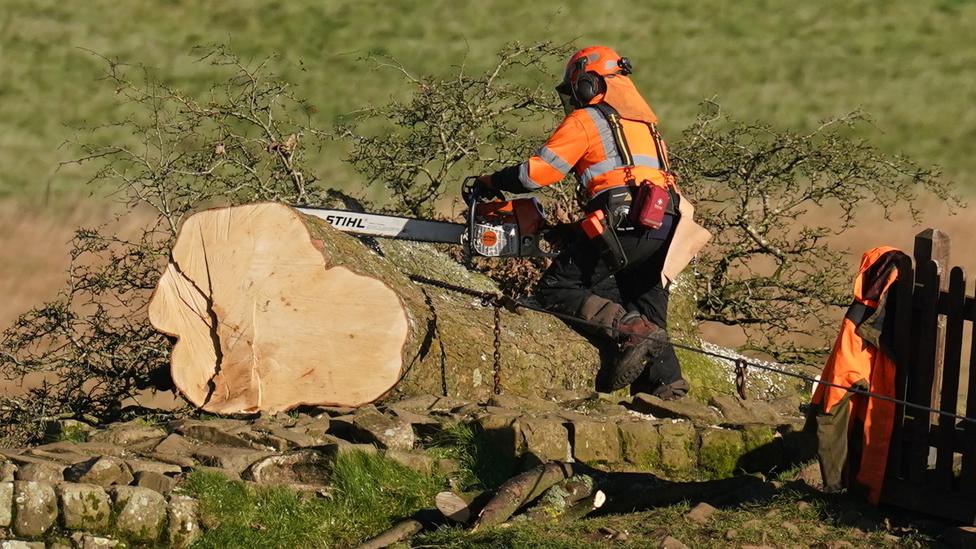
- Published28 September 2023
